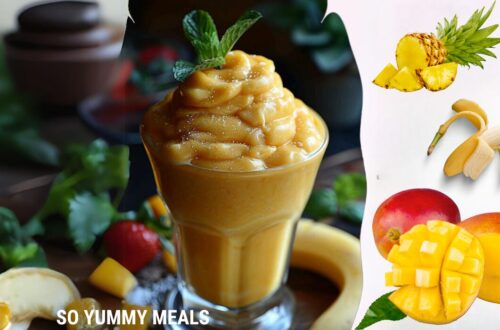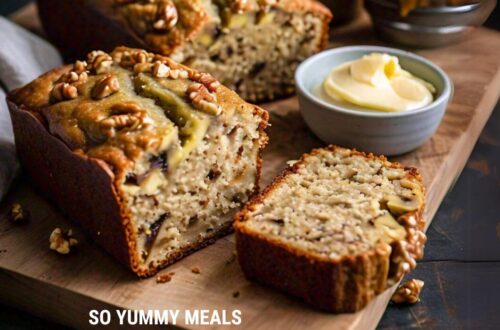
Homemade Iced Tea: Refresh Your Summer!
As the summer heat intensifies, there’s nothing quite like a tall glass of homemade iced tea to cool you down and quench your thirst. Whether you’re lounging by the pool, hosting a backyard barbecue, or simply looking for a refreshing drink to enjoy on a lazy afternoon, homemade iced tea is the perfect choice. In this blog post, we’ll explore the wonderful world of homemade iced tea, from its rich history to various brewing methods and exciting flavor combinations. So, grab a glass and let’s dive into the art of crafting the perfect homemade iced tea!
The History of Iced Tea
Origins of a Refreshing Tradition
Iced tea has a fascinating history that dates back to the early 19th century. While hot tea had been enjoyed for centuries, the concept of serving it cold was a novel idea that quickly gained popularity in the United States.
The first recorded instance of iced tea appeared in 1839 in a cookbook titled “The Kentucky Housewife” by Lettice Bryan. However, it wasn’t until the 1904 World’s Fair in St. Louis that iced tea truly captured the American imagination. During a particularly hot summer, tea plantation owner Richard Blechynden decided to serve his tea over ice to attract more customers. The refreshing beverage was an instant hit, and iced tea soon became a staple in American households.
Evolution of Iced Tea
Over the years, iced tea has evolved and adapted to different tastes and cultures. In the Southern United States, sweet tea became a beloved tradition, with generous amounts of sugar added to the brew. Meanwhile, other regions experimented with various flavors and ingredients, leading to the diverse array of iced tea options we enjoy today.
The Benefits of Homemade Iced Tea
Health Benefits
Homemade iced tea offers numerous health benefits, making it a great alternative to sugary sodas and artificial drinks. Here are some reasons why you should consider making your own iced tea:
- Rich in antioxidants: Tea contains polyphenols, which are powerful antioxidants that help protect your body from free radicals and may reduce the risk of certain diseases.
- Hydration: Iced tea is an excellent way to stay hydrated, especially during hot weather.
- Low in calories: When made without added sugar, iced tea is a low-calorie beverage option.
- Potential metabolism boost: Some studies suggest that certain compounds in tea may help boost metabolism and aid in weight management.
- Variety of health-promoting compounds: Different types of tea offer various health benefits, from improving heart health to supporting digestion.
Customization and Control
One of the biggest advantages of making homemade iced tea is the ability to control the ingredients and customize the flavor to your liking. Unlike store-bought iced teas that often contain excessive amounts of sugar and artificial additives, homemade versions allow you to:
- Adjust the sweetness level to your preference
- Experiment with different tea varieties and blends
- Add fresh fruits, herbs, and spices for unique flavor combinations
- Control the strength of the tea by adjusting steeping times
Essential Ingredients for Homemade Iced Tea
Choosing the Right Tea
The foundation of any great homemade iced tea is, of course, the tea itself. While you can use almost any type of tea to make iced tea, some varieties work particularly well. Here are some popular options:
- Black tea: The classic choice for traditional iced tea, offering a bold, full-bodied flavor.
- Green tea: A lighter, more refreshing option with a subtle grassy taste.
- White tea: Delicate and mildly sweet, perfect for a light and refreshing iced tea.
- Oolong tea: Offers a balance between black and green tea, with complex flavors.
- Herbal tea: Caffeine-free options like hibiscus, chamomile, or mint for a fruity or floral iced tea.
Water Quality
The quality of water you use can significantly impact the taste of your homemade iced tea. For the best results:
- Use filtered or spring water to avoid any off-flavors from tap water.
- If using tap water, let it sit for a few minutes to allow chlorine to dissipate.
- Avoid using distilled water, as it can result in a flat-tasting tea.
Sweeteners (Optional)
If you prefer your iced tea sweetened, there are various options to choose from:
- Sugar: Traditional white sugar or alternatives like raw sugar or coconut sugar.
- Honey: A natural sweetener that adds a unique flavor profile.
- Agave nectar: A plant-based sweetener with a neutral taste.
- Stevia: A calorie-free natural sweetener for those watching their sugar intake.
- Simple syrup: A mixture of equal parts sugar and water, perfect for sweetening cold beverages.
Basic Homemade Iced Tea Recipe
Now that we’ve covered the essentials, let’s dive into a basic homemade iced tea recipe that you can easily customize to your liking.

Equipment
- Bowl
Ingredients
- 4 tea bags (black tea, green tea, or your preferred variety)
- 4 cups of water
- Ice cubes
- Optional: Sweetener of choice
- Optional: Lemon slices, mint leaves, or other garnishes
Instructions
- Bring 4 cups of water to a boil in a medium-sized pot.
- Remove the pot from heat and add the tea bags.
- Allow the tea to steep for 3-5 minutes, depending on your desired strength.
- Remove the tea bags and discard them.
- If using a sweetener, add it to the hot tea and stir until dissolved.
- Let the tea cool to room temperature.
- Fill a pitcher with ice cubes and pour the cooled tea over the ice.
- Refrigerate until chilled, about 1-2 hours.
- Serve over ice and garnish with lemon slices or mint leaves if desired.
Nutrition
This basic recipe serves as an excellent starting point for your homemade iced tea adventures. Feel free to adjust the tea-to-water ratio, steeping time, and sweetness level to suit your taste preferences.
Alternative Brewing Methods
While the traditional hot-brew method is popular, there are other ways to make homemade iced tea that can yield different flavor profiles and benefits.
Cold Brew Method
Cold brewing has gained popularity in recent years, and for good reason. This method produces a smoother, less bitter iced tea with a unique flavor profile.
To make cold brew iced tea:
- Add 8-10 tea bags to a large pitcher filled with 8 cups of cold water.
- Cover and refrigerate for 8-12 hours or overnight.
- Remove the tea bags and discard them.
- Sweeten if desired and serve over ice.
Cold brewing extracts different compounds from the tea leaves, resulting in a less astringent and more refreshing beverage. It’s particularly well-suited for green and white teas.
Sun Tea Method
Sun tea is a classic method that harnesses the power of the sun to brew a gentle, flavorful iced tea.
To make sun tea:
- Fill a large glass jar with 8 cups of water and 8-10 tea bags.
- Cover the jar and place it in direct sunlight for 3-5 hours.
- Remove the tea bags and discard them.
- Sweeten if desired and refrigerate until chilled.
- Serve over ice.
While sun tea is a beloved tradition, it’s important to note that brewing tea at low temperatures for extended periods can potentially lead to bacterial growth. To ensure safety, it’s recommended to refrigerate sun tea promptly and consume it within a day or two.
Flavor Variations and Add-Ins
One of the joys of making homemade iced tea is the ability to experiment with different flavors and ingredients. Here are some popular variations to try:
Fruit-Infused Iced Tea
Add fresh or frozen fruits to your iced tea for a burst of natural sweetness and color. Some delicious options include:
- Peach slices
- Strawberries
- Raspberries
- Mango chunks
- Citrus wheels (lemon, lime, or orange)
To infuse your tea with fruit flavors, simply add the fruit to your brewed tea while it’s cooling, or muddle the fruit in the bottom of your glass before adding the iced tea.
Herb-Infused Iced Tea
Fresh herbs can add a delightful aroma and complexity to your homemade iced tea. Try these herb combinations:
- Mint: Classic and refreshing, perfect with green or black tea
- Basil: Adds a unique, slightly peppery note
- Rosemary: Pairs well with lemon and green tea
- Lavender: Offers a soothing, floral flavor
- Thyme: Provides a subtle, earthy taste
To infuse herbs, add them to the hot tea during the steeping process or muddle them gently in your glass before adding the iced tea.
Spiced Iced Tea
For a warming twist on traditional iced tea, try adding spices to your brew:
- Cinnamon sticks
- Cardamom pods
- Star anise
- Ginger slices
- Vanilla bean
Add these spices to the hot water along with your tea bags during the brewing process for a fragrant and flavorful iced tea.
Tips for Perfect Homemade Iced Tea
To ensure your homemade iced tea turns out perfectly every time, keep these tips in mind:
- Use fresh, high-quality tea: The fresher your tea, the better your iced tea will taste.
- Don’t over-steep: Steeping tea for too long can result in a bitter taste. Follow the recommended steeping times for your chosen tea variety.
- Chill properly: Allow your tea to cool to room temperature before refrigerating to prevent cloudiness.
- Make it stronger: Since ice will dilute your tea as it melts, brew your tea slightly stronger than you would for hot tea.
- Experiment with tea blends: Mix different types of tea to create unique flavor profiles.
- Store properly: Keep your iced tea in a sealed container in the refrigerator and consume within 3-4 days for the best flavor.
- Avoid adding milk: Unlike hot tea, most iced teas don’t pair well with milk, as it can curdle in the cold liquid.
Serving and Presentation Ideas
Elevate your homemade iced tea experience with these serving and presentation suggestions:
- Use clear glasses to showcase the beautiful color of your iced tea.
- Garnish with fresh fruit slices, herb sprigs, or edible flowers.
- Create colorful ice cubes by freezing fruit pieces or edible flowers in water.
- Serve in mason jars for a rustic, picnic-style presentation.
- Offer a variety of sweeteners and add-ins for guests to customize their drinks.
- Use paper straws or reusable metal straws for an eco-friendly touch.
Conclusion
Homemade iced tea is more than just a refreshing beverage; it’s a canvas for creativity and a gateway to a world of flavors. From the classic sweet tea of the American South to exotic fruit and herb-infused variations, there’s an iced tea recipe to suit every palate.
By making your own iced tea at home, you have full control over the ingredients, allowing you to create a healthier, more personalized drink. Whether you prefer a traditional hot-brewed black tea or want to experiment with cold brew methods and unique flavor combinations, the possibilities are endless.
So, the next time you’re craving a cool, refreshing drink, skip the store-bought options and reach for your tea kettle instead. With a little patience and creativity, you’ll be sipping on the perfect homemade iced tea in no time. Cheers to staying cool and hydrated all summer long!





